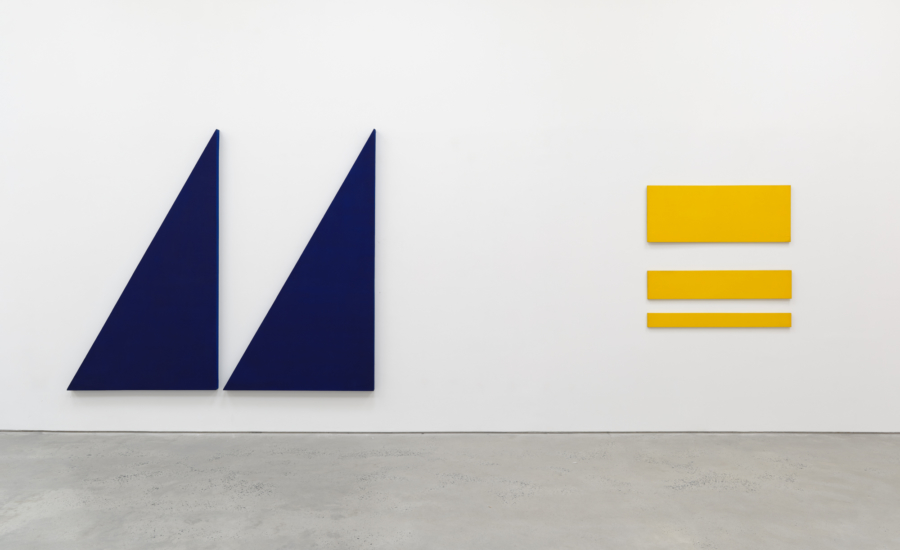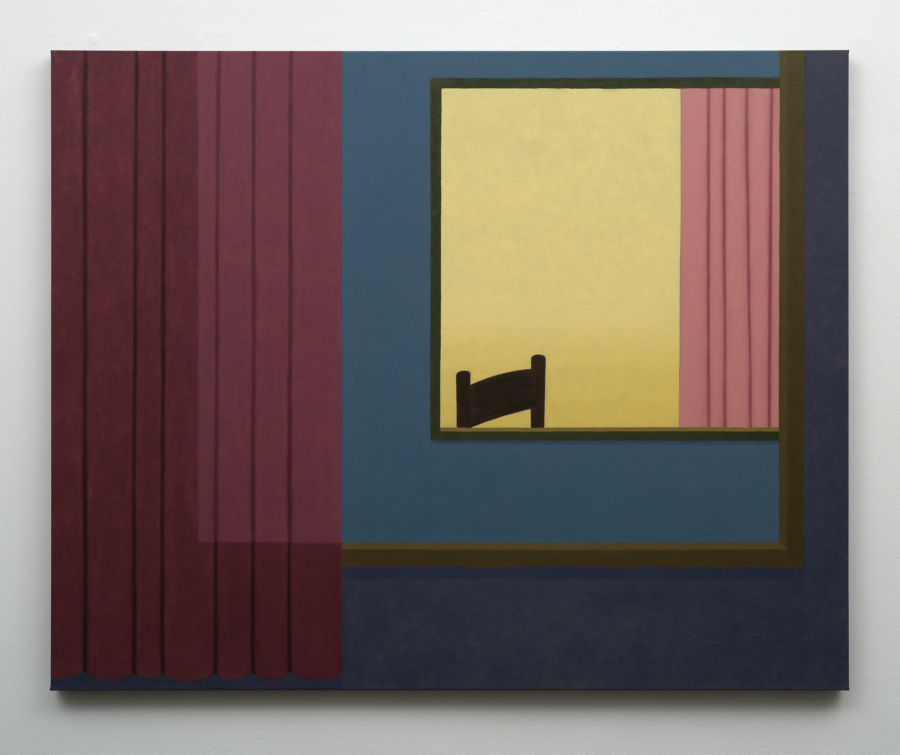March 29, 2023
Download as PDF
View on The Brooklyn Rail

Installation view: Paul Mogensen: Paintings: 1965-2022, Karma, New York, 2023. Courtesy Karma.
In 1965, Paul Mogensen moved from Los Angeles to New York City. His friend, the painter David Novros, whom he had met at the University of Southern California—Mogensen had studied mathematics and geometry before transferring eventually to studio art—had recently made this move and introduced Mogensen to Brice Marden and Klaus Kertess, the director of Bykert Gallery which opened in September 1966. Kertess offered him a solo exhibition, and eventually all three artists exhibited there.
Included at Karma is Copperopolis (1966), a painting from a series initiated for the Bykert exhibition that comprises sections or parts that are physically separate from each other and painted with one unifying color. In this case, the color copper, in acrylic lacquer, is sprayed on. The title is taken from the name of a town in California where copper, not gold, was discovered. The size and sequence of its 16 parts is determined using an arithmetic progression in which there is a doubling of height and width, vertically and horizontally. Beginning with the smallest part at the bottom right, a square, the space between parts is equal to the height or width of the previous part. The largest part, also a square, is at the top left of the composition, which is also square at 132 inches by 132 inches. There is choice in how to follow this rule of progression, and so in how this visually unfolds as geometry. The crossing-over of geometrical elements and relationships is multiple and very beautiful.
All of Mogensen’s paintings are structured this way—it is a direct opening onto extraordinary complexities—and once the progression is decided, the painting that results “makes itself,” as Mogensen has said. Installed adjacent to Copperopolis, is no title (1968), a 9-part painting produced using the same principle of arithmetic progression but with reduced extension, and fewer parts at 100 inches square in overall size. Eventually, Mogensen abandoned using separate panels as we see in No title (9 part violet acrylic) (1969) and continued with the compositional formulas on single canvases.
Mogensen prefers No title to any associative naming which, along with the arithmetical progressions, is consistent for all of the subsequent paintings. An absence of date is also preferred. This refusal of the usual biographic and temporal locating stands the paintings in clear relation to the viewer first and foremost, and away from emphasized subjectivity or expressionist ambitions: what the viewer thinks about what she sees is not directed by titling. The progressions are not an expression of pure math or number, but an alternative way of composing a painting, making unnecessary the tradition of working from the figure or landscape—Mogensen’s approach from the very beginning. Not surprisingly, perhaps, he found early influences in Russian Constructivism, and in particular the work of Rodchenko and Tatlin.
In the surface facture of the paintings, or in the edges of shapes within them, there is not a trace of pedantic or sanitized neatness. This is geometrical but not hard-edge painting. The paintings are all about geometry and color; their mapping of consequent compositions, together with application of paint, is always workmanlike. There is no pretense. Both the tactility and the visual responsiveness of each painting is full—color as pigment, the paint as the medium that supports pigment, dense or transparent, glossy or matte is always crucial in the appearance of each painting. There are, in no title (1969), subdivided graphite lines and aluminum enamel horizontal bands; and the color spectrum paintings from the 1970s name the surrounding ground color of the spiral. Naming it acknowledges the colored pigment—its material particularity. It is not just another color: it has different viscosity and different chemical attributes that determine how it can be applied and seen. The “cadmium red deep oil” has physical qualities unlike, for example, the “ultramarine in stand oil” and “diluted alizarin crimson acrylic” of no title (2022). E.W. Quine’s philosophy, based in natural science and math, comes to mind for me in what I take to be Mogensen’s resistance to gratuitous metaphysical givens. There is, in facing what can be known, not a false or easy demurral, but in its stead a sustained approach toward a reality that one can touch and see—as well as an appreciation of mathematic relationships that we do not always see but are always there.



